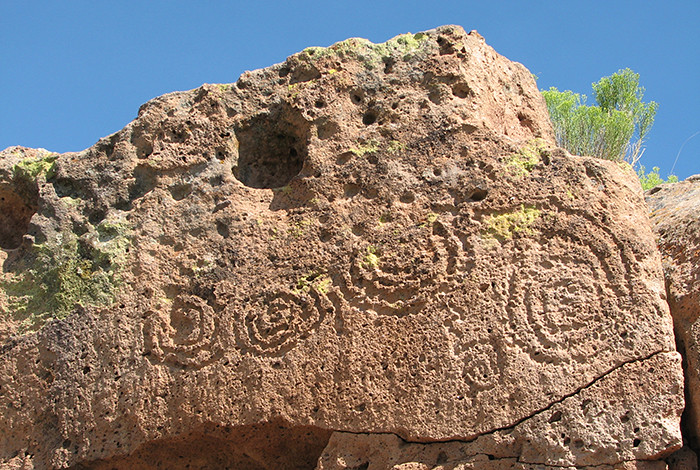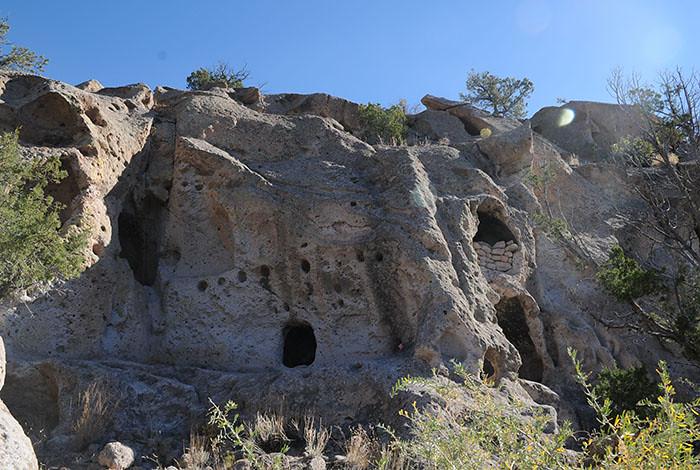Cultural Resources on the Pajarito Plateau

Rock art (petroglyphs) at Tsirege Pueblo. Petroglyphs are images that have been pecked, incised, or abraded into tuff cliff faces or boulders.CREDIT: ASER Summary
For decades, archaeologists have documented and inventoried cultural and historic sites on the Lab-occupied areas of the Pajarito Plateau. More than 1,800 cultural properties have been identified on Laboratory property and are protected by law under the National Historic Preservation Act (NHPA).
Cultural sites on the Laboratory date from the Archaic period (5500 BC–600 AD) and span into the early Cold War period (1943–1963). These sites include large and small pueblos, rock art panels, trails, and shrines associated with Ancestral Pueblo culture (1150–1600 AD). Other types include agricultural sites, man-made masonry rooms carved into the side of rock faces (known as cavates), water reservoirs, game traps, historic homesteads, and Manhattan Project and early Cold War period buildings.
The goal of the NHPA is to have federal agencies act as responsible stewards of the nation’s cultural resources. Archaeologists work under this law to identify, evaluate, and protect cultural resources eligible for the National Register of Historic Places (NRHP).
Consultation with Native American communities regarding archaeological sites and traditional cultural properties is also required by law. The Department of Energy (DOE) continues to consult with the pueblos of Cochiti, Jemez, Santa Clara, San Ildefonso, and other affected area tribes with respect to identifying and protecting traditional cultural properties, human remains, and sacred objects.
Why does cultural preservation matter?
Many sites, which might appear unremarkable to the untrained eye, are significant to New Mexico’s native people. These sites were the homes of their ancestors. The Laboratory’s Environmental Stewardship Services Group assists the DOE in its stewardship responsibilities, such as sharing knowledge concerning the cultural resources and public outreach initiatives to dissuade looting and vandalism of cultural properties. Looting includes digging, excavating, or collecting artifacts, architecture, and human remains and can be prosecuted as a felony under laws governing burial grounds.
To learn more about cultural resources and preservation at the Laboratory, visit lanl.gov/environment/protection/ cultural-preservation, or stop by the resource management exhibit at the Bradbury Science Museum.
To see this and other articles about how the Laboratory’s operations might impact Northern New Mexico, please check out the recently published Annual Site Environmental Report Summary, which details the Lab’s commitment to environmental programs.

Ruins from Nake’muu Village.






